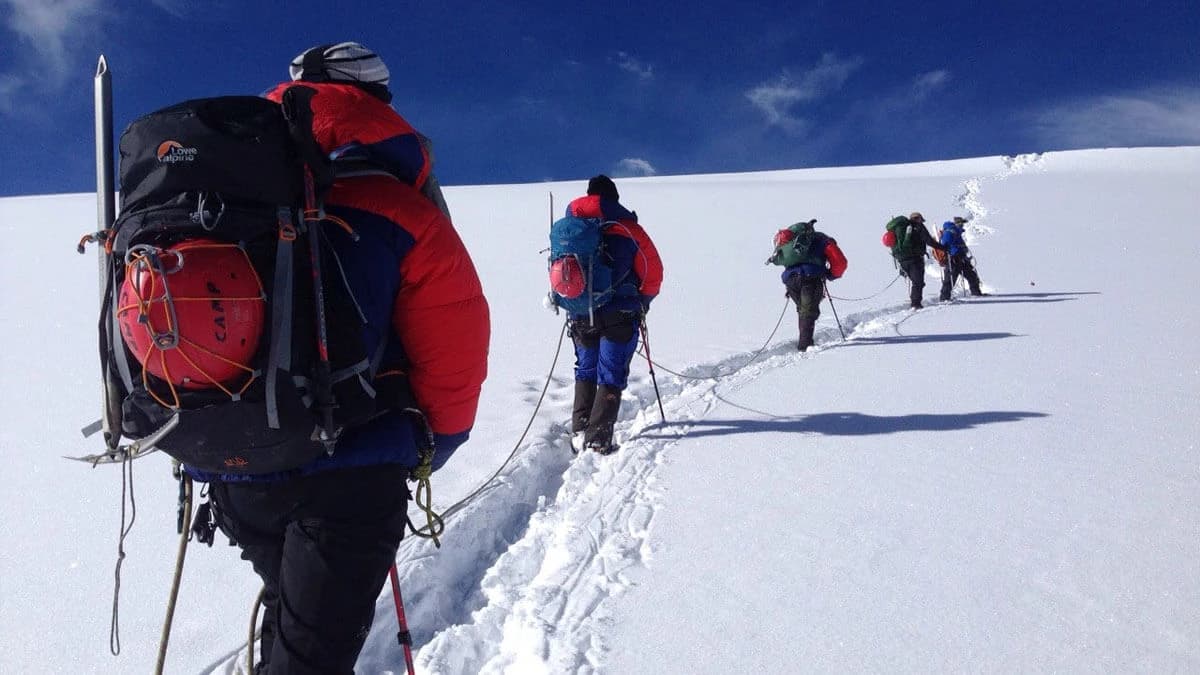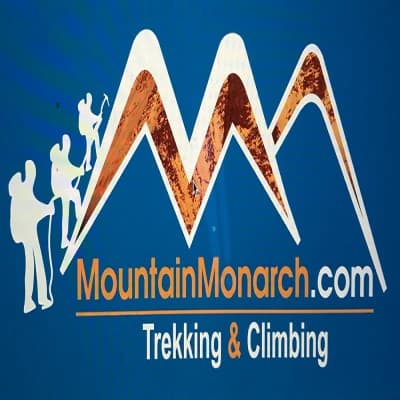The Himalayas, an arena of climbing adventure with an uncountable named and unnamed parade of stunning peaks, is a mica for a climbing expedition. Peak climbing in Nepal is the 2nd most favorite adventure activity after trekking. With the high Himalayas, Nepal is a top adventure destination for peak climbing.
Peak Climbing in Nepal - Must Follow Hierarchy
Peak Climbing in Nepal - Hierarchy to follow
Peak climbing in Nepal can be categorized into three hierarchy sections based on the difficulty level and mountain elevation: trekking peaks, Peak climbing, and climbing Expeditions.
Trekking Peak
The Nepal government has authorized the Nepal Mountaineering Association (NMA) to climb 27 trekking peaks ranging from 5800 to 6500 meters. The most popular trekking peaks in the Everest region are the Island and Mera peaks in Nepal. A fit person with outdoor adventure experience can join these peak-climbing trips. This type of peak climbing is simply a step further than hiking and trekking.
Climbing Peak
Many stunning peaks range from 6500 to 8000 meters, generally known as the best peak climbing or intermediate climbing adventure before the genuine 8000-meter peak expedition and a step up after the trekking peaks. Amadablam, Baruntse, and Saribung are the mountains most climbed in this range.
Expedition Peak
Eight thousand-meter peaks in the Himalayas are a standard term for expedition climbing. Enrolling on any of these expeditions requires mountain climbing experience and mountaineering training. The highest peak of the Mt. Everest expedition is the ultimate adventure climb. Other 8000-meter peaks, including Annapurna, Manaslu, Dhaulagiri, and Kangchenjunga, stand at the top to challenge global climbers.
A curated plan is best for anyone interested in the expedition climb. Climbing high and higher peaks in the Himalayas must be done one after another. A fit and dedicated person can do the most extensive Expedition in 2 to 4 years. Respect the nature of the Himalayas; thus, proper planning with the elevation gain is the first and foremost point to follow. The first step is to do the trekking to check how your body reacts to elevation gain. Second, join the trekking peak climbing like an Island peak beyond simply hiking. Before the big Expeditions like Everest, a technical and challenging peak climb of around 7000 or another 800-meter mountain like Amadablam or Manaslu is recommended.
The best season for Peak Climbing in Nepal
Choosing the best time for peak climbing in Nepal is essential for a safe climbing adventure. Typically, Spring (March, April, and May) and autumn seasons (September, October, and November) are the best times to plan to climb. The best time for peak climbing depends on the peak and its specific characteristics. Like the climb, Mt Everest and other 8000-meter peak climbs are in Spring, whereas Ama Dablam and Manaslu are best suited in Autumn. Trekking peaks can be done in Spring and Autumn, including the Island, Mera, Chulu, and Yala. Some trekking peaks, like Island and Yala Peak, can be customized and done in December or winter.
How complicated and physical fitness
Peak climbing in Nepal is challenging and one of the most difficult adventure activities because it simultaneously challenges physical fitness and mental strength. Proper physical fitness is necessary for longer hikes and climbs at problematic and higher elevations in unfavorable weather conditions. Therefore, planning for altitude elevation gain is crucial for peak climbing trips.
Peak climbing in Nepal: Gear and Training
Special climbing gear is required for any of these peak climbing in Nepal. Typically, harnesses, ascenders, a figure of eight, an ice axe, crampons, climbing rope, and climbing boots are necessary. Climbing boots vary from regular boots for the trekking peak to double boots for the more extensive Expedition. Suitable gloves, a warm cap, windstopper pants, and a jacket are needed. Based on the peak elevation selection, a good down jacket, sleeping bag, and body gear are required.
Proper climbing training is not mandatory to join trekking peak climbing in Nepa. As such, climbing training is being customized at the base camp. However, training in rock climbing and knowledge of basic knots is helpful for a safe climbing adventure. Therefore, proper climbing training or earlier trekking peak climbing experience is a must to join a 7000 to 8000-meter peak climbing expedition.
Climbing Permits and Cost
Permits are a must for all the peak climbing in Nepal. Based on the elevation and characteristics of peaks, it costs from US$ 250 to US$ 11000 per person. Besides the climbing permit, one must have trek permits, national park entry permits, village development entrance tickets, special and restricted region permits as applicable, garbage deposit fees, etc., which your local tour company organizes for you. Higher peak climbing and expedition teams must have a government liaison office to go with the team. Your climbing cost does cover all these permit prices.
Conclusion
The Nepal mountains offer great climbing opportunities to fit in and experience adventures. Good physical fitness and a strong and positive attitude are necessary for whichever peak you climb. However, one can join trekking peak climbing without training. Proper planning is a must for peak climbing in Nepal. More preparation and better planning are the keys to a successful and safe climbing adventure in Nepal.
Mountain Monarch: A Reputed Trekking Company in Nepal, crafting the best and safe adventure trekking and climbing more than two dacades





